How to buy kitchen flooring - everything you need to know
The expert-led guide that will make finding and purchasing the right flooring for your kitchen a breeze
When designing the heart of your home there are countless decisions to be made and items to purchase. Many of us won't even know where to start when it comes to the bigger choices, such as how to buy kitchen flooring, which is why we've compile this expert-led to answer all your questions.
There are myriad beautiful kitchen flooring ideas out there, so discovering how to choose and purchase the right option for your space will help simplify your design process. After all, the flooring is a major decision in terms of style and budget and will impact the overall look and feel of the space. 'A good place to start when selecting materials is the flooring,' says Robert Burnett, Head of Design, Holloways of Ludlow. 'For example, it’s usually best to avoid veneered or wood kitchen cabinetry if the floor is also wood. Most kitchens require a contrast in materials and/or colour to achieve impact.'
In addition to appearance, the flooring surface needs to be durable and easy to maintain and clean. Once you've got your head around all those factors, the actual buying process begins. Read on to break down how you should go about selecting and purchasing the best kitchen flooring for your home.
How to buy kitchen flooring
'There is a wide range of different options when it comes to selecting kitchen flooring, with different brands on the market offering solutions to suit customer needs,' notes Matthew Brook, National sales Manager, IVC Group. 'From luxury vinyl flooring, to hardwood and stone tiles among other choices, there is a multitude of options. Considering what’s best for you based on space, price, style and the flooring’s benefits, will ensure you make an educated decision.'
1. Learn your flooring materials
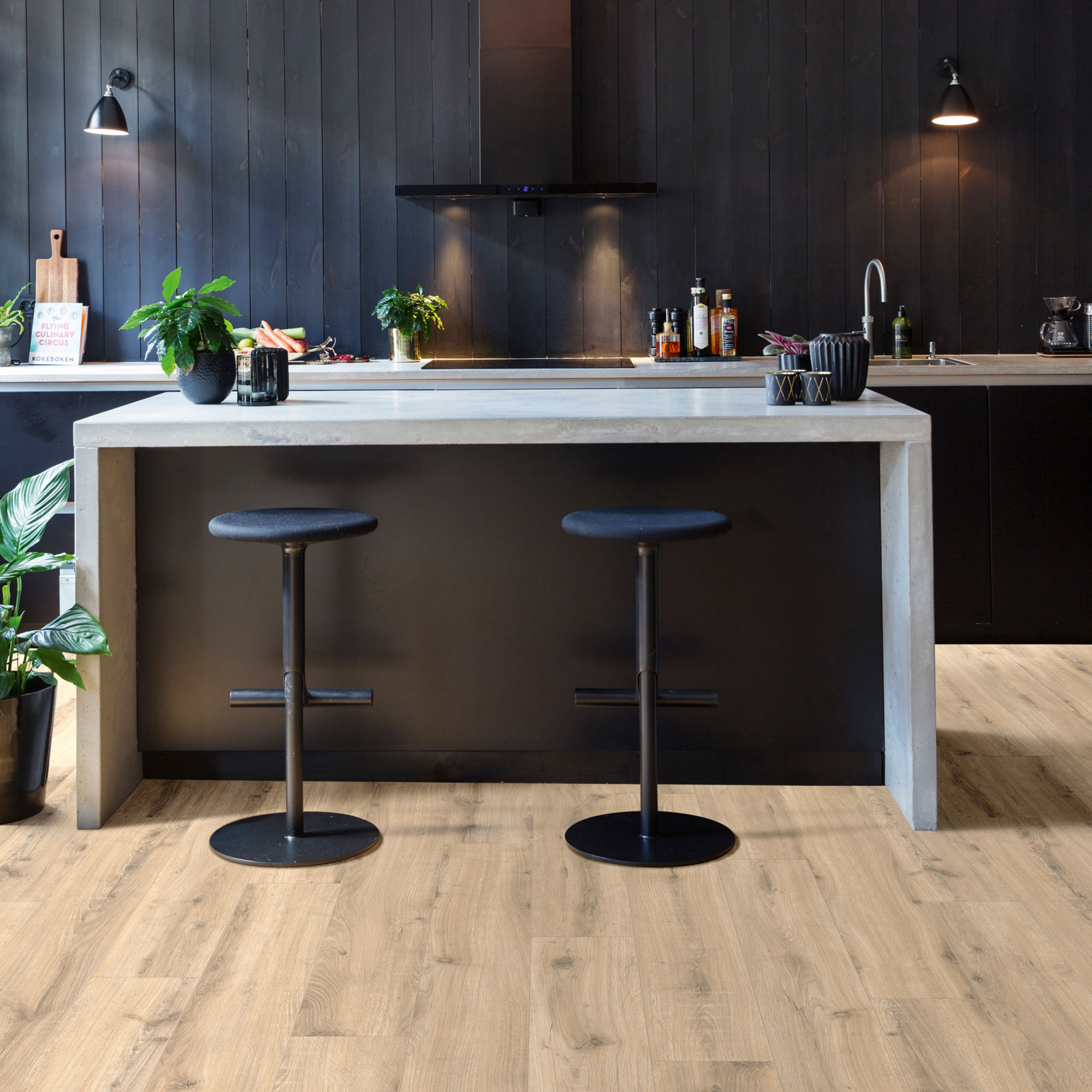
Flooring comes in all manner of materials, but for a high-traffic and, let's be frank, messy space like the kitchen, it's one of the most important floors to get right. 'The type of flooring you choose for your home will depend on how you use each individual room,' agrees James Scully, Founder, Recork. 'For a kitchen, it is often a room in which we spend most of our time, so it is important to go for a material that is durable, robust and easy to maintain due to the amount of foot traffic.'
For this reason, when learning how to buy kitchen flooring, one of the best places to start is getting to grips with which materials will work in your space. To name a few of the types on offer you have natural stone, porcelain, real woods, cork, laminate, vinyl and many more.
2. Choose the right look for your space
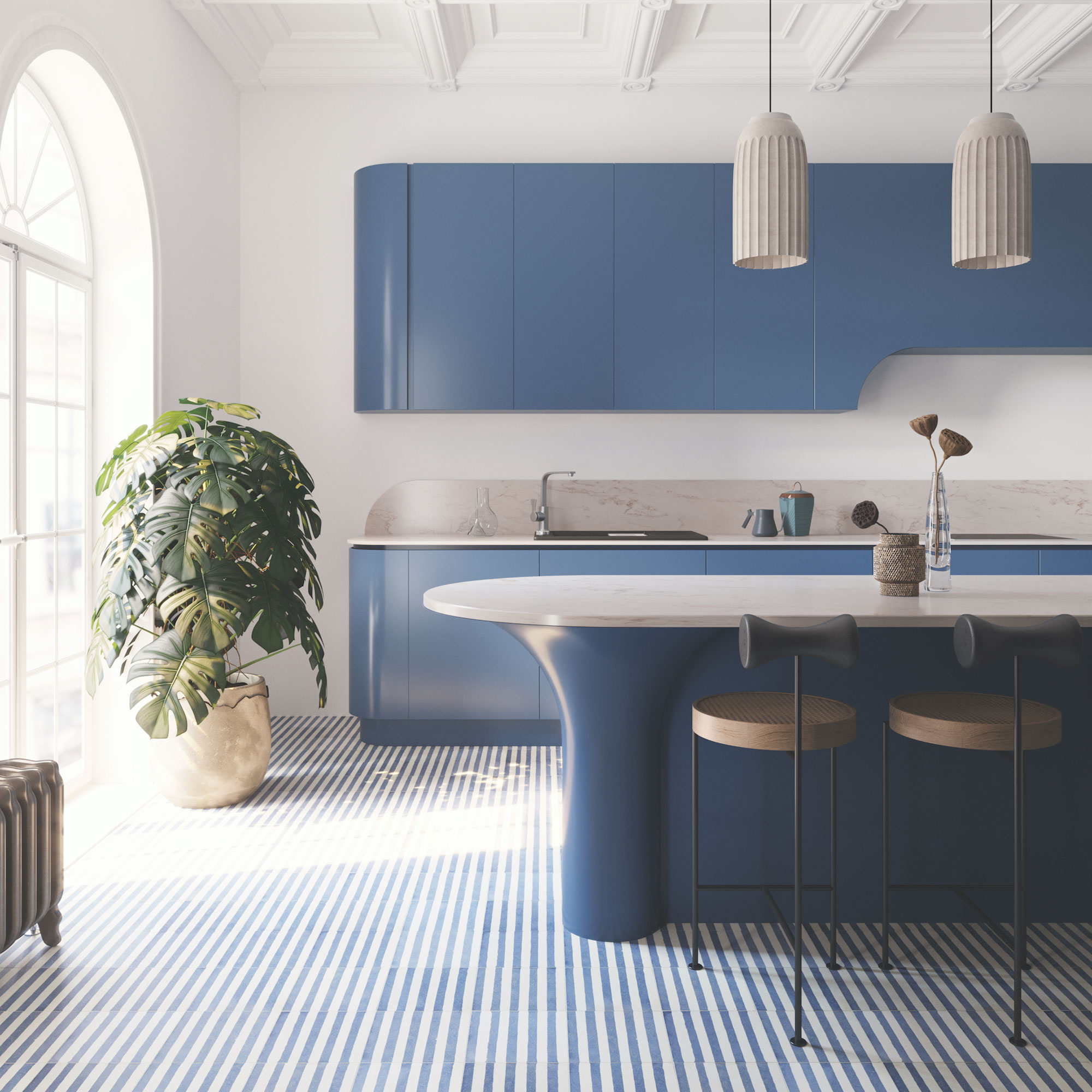
'Flooring choice is very dependent on each individual kitchen space and how much traffic it receives and of course the look you’re trying to achieve,' says Damla Turgut, Founder, Otto Tiles & Design. 'It’s a balance between aesthetics and practicality.'
Get the Ideal Home Newsletter
Sign up to our newsletter for style and decor inspiration, house makeovers, project advice and more.
A good rule of thumb is to decide whether you want your flooring to co-ordinate with or contrast from your cabinetry. To coordinate, go for materials in the same finish (matt or gloss) and match the colours as closely as possible. Choose a material that can be used for both worktops and floors, or match, say, a walnut floor to a rich brown stone or composite worktop. For contrast, choose different finishes in the same colour or different colours in the same finish - or both for a dramatic contrast.
Your overall look will help you decide between your materials. After all, a traditional kitchen won't work with terrazzo kitchen floor tile ideas or brightly coloured LVT.
3. Consider what maintenance will be required
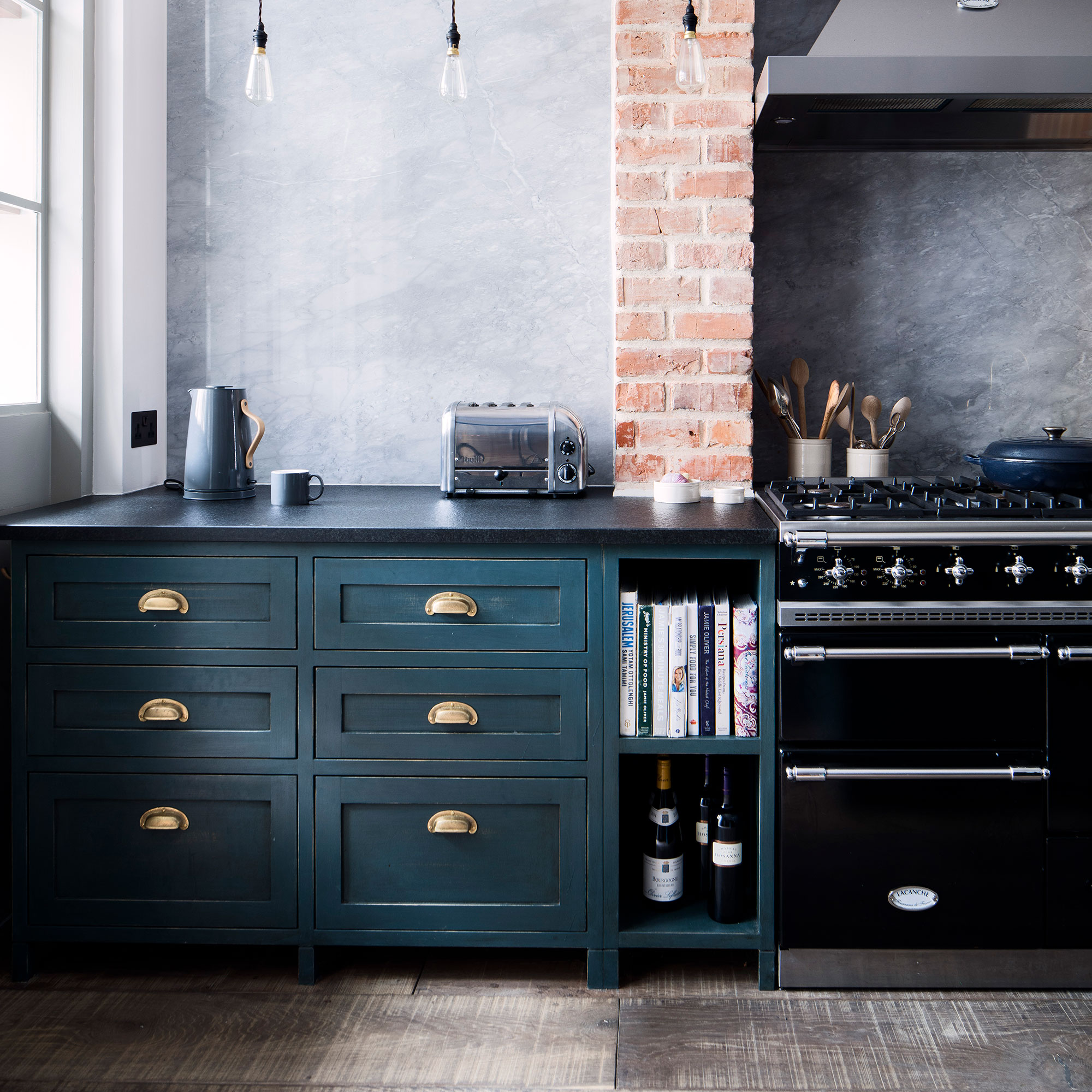
Each flooring material will need different amounts of maintenance, so it's imperative you select a product that works with your lifestyle. Some flooring needs regular resealing and treating with specialist products. It’s a good idea to consider whether you’ll have time to maintain your kitchen floor or whether you’d prefer an easy-care material that you can sweep, mop and then forget about.
One of the easiest to look after is LVT, as it's both scratch and stain resistant. 'Its maintenance is simple with cleaning products and cotton cloths used to reduce the chance of scuff marks on the flooring and felt pads available to also protect floors from marks due to sliding furniture,' comments Matthew from IVC Group.
'Laminate, stick down vinyl and click vinyl, though porcelain tiles are also very durable and easy to clean and maintain,' adds Kamila Chalfin, Marketing & Brand Manager, Tile Giant.
'As a rule, real wood flooring is not the most practical of floors to use in a wet or humid environment,' says Edward Eagle, Residential Sales Director, Havwoods. 'However, if you were set on introducing wood into the kitchen then an engineered board is the best option as opposed to a solid wood plank. The multi-layered construction of an engineered wood plank means that it's far less susceptible to warping in areas where moisture is present and temperatures fluctuate, like a kitchen. This means that your beautiful wood floor is less likely to swell, shrink, cup or gap.'
One material that is surprisingly easy to look after is cork. They simply need spills wiped up, and regular vacuuming or mopping. 'It is important to periodically re-coat your floor when it starts to show signs of wear and tear,' adds James from Recork. 'Due to corks elasticity and compressibility, it is extremely long wearing and allows your floor to adapt to pressure and quickly recover its initial shape - and so survives the test of time!'
Whatever you go for, ensure you have the right cleaning equipment, like the best steam cleaners, to hand.
4 Work with your room size
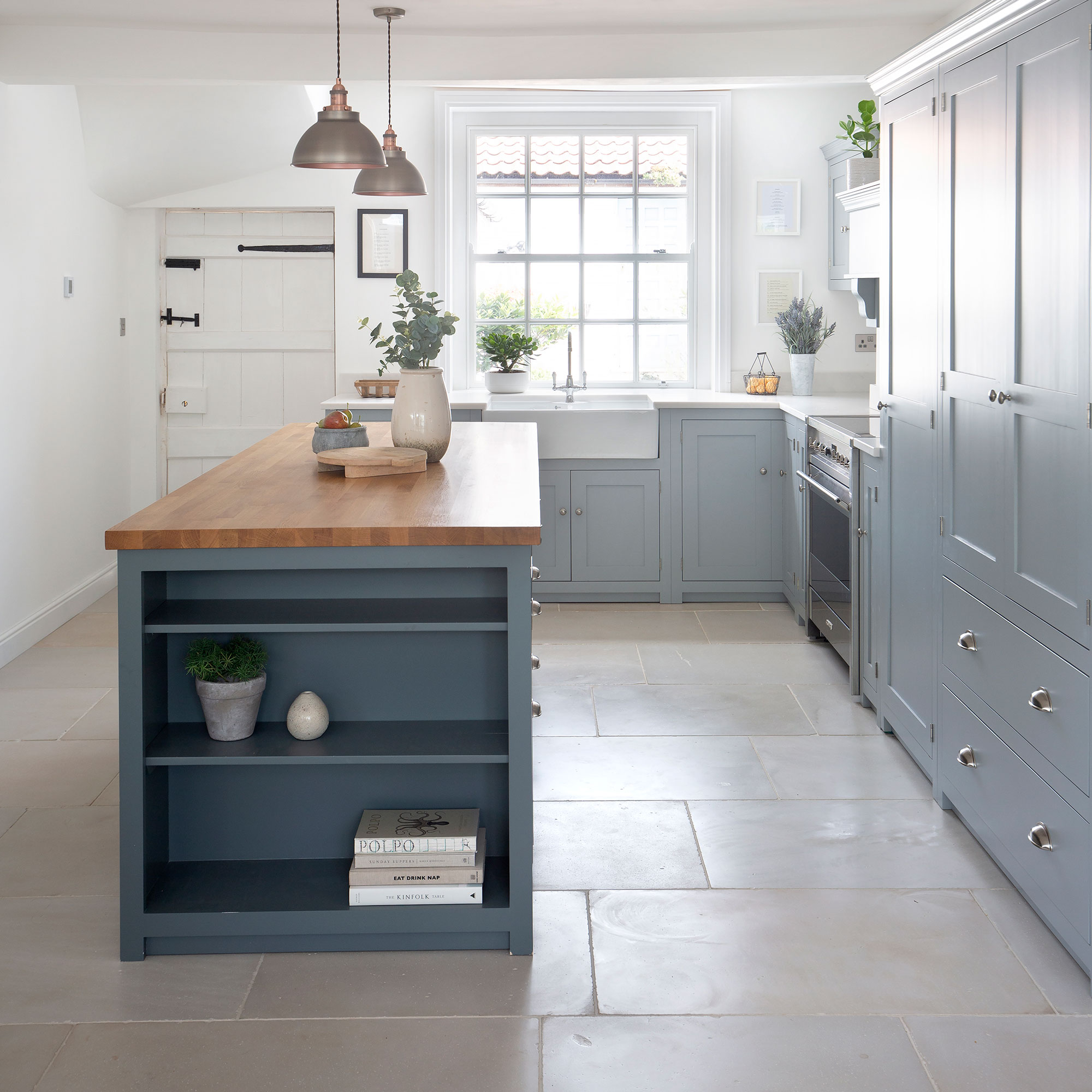
Working out how to buy kitchen flooring is also impacted by the size of your kitchen itself.
'A smaller kitchen requires careful thought and consideration to give the illusion of a larger space,' advises Isabel Fernandez, Director, Quorn Stone. 'Contrary to belief we often find a larger tile can work well at achieving this. A smaller tile results in lots of grout joints which can enclose the space and detract the eye from the tile. We often suggest a 900 x 600 tile as it is a versatile size that works well in both smaller and larger areas.'
'Alternatively wood effect porcelain is becoming increasingly popular in tighter spaces due their long and narrow format,' continues Isabel. 'If you choose a complementary grout colour it makes the grout less noticeable which again helps to open the space out.'
'When choosing a floor tile, you need to consider the architecture of the space,' agrees Damla from Otto Tiles. 'You don’t want to choose a tile that visually closes in a small space and absorbs all of the light.'
5 Remember to consider grouting if opting for tiles

'Choosing the right tile is not enough, your choice needs to be installed like a pro,' says Damla from Otto Tiles. 'Don’t leave the grout colour choice or the grout width to your builder. Choosing a grout colour might seem unnecessary but the wrong colour or grout space can ruin the overall effect. When choose a grout colour, try to match it to the main colour or background colour of your chosen tiles.'
'If you choose to have tiles on your floor, we recommend coordinating grout colours and never select a very light/white grout!,' advises Kamila from Tile Giant. 'Even if your tiles are light, go for an off white or ideally light grey, as it will last longer.'
Another method is to simply choose a tile size that means grouting is kept to a minimum. 'Our most popular kitchen floor tiles are 120x 120cm,' notes Jo Oliver, Director, The Stone & Ceramic Warehouse. 'These large-format designs will mean fewer grout lines, and therefore less cleaning.'
6 Keep your budget in mind
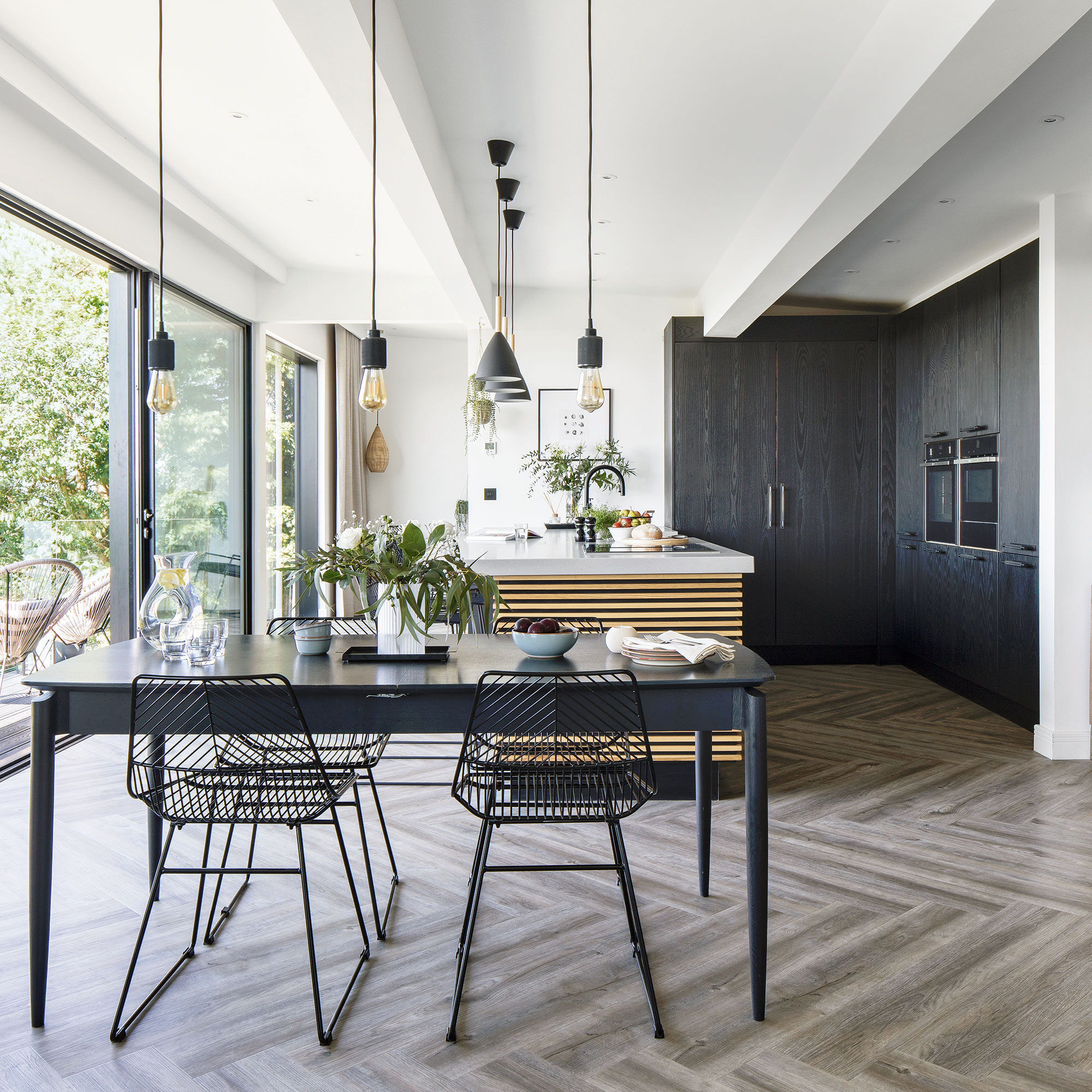
The floor is the largest surface area in a space, so it can get expensive quickly. Budget carefully to include all fitting costs and extra expenses for underlays, fixatives and grouts.
While it may be tempting to opt for cheaper versions, unless the flooring is right for your space, in terms of style, material and maintenance, you'll end up paying more in the long run.
'A cheaper effect tile may seem cost effective, but they will never look like the real ones and will create an unnatural effect under natural and artificial light,' agrees Damla from Otto Tiles. 'Whilst the real deal might be more expensive than these printed versions, they’re a more long-lasting and durable investment into authentically produced and high-quality product.'
There are of course budget options available, but make sure you're getting the best quality for your space, as well as your bank account.
6. Take a sample home
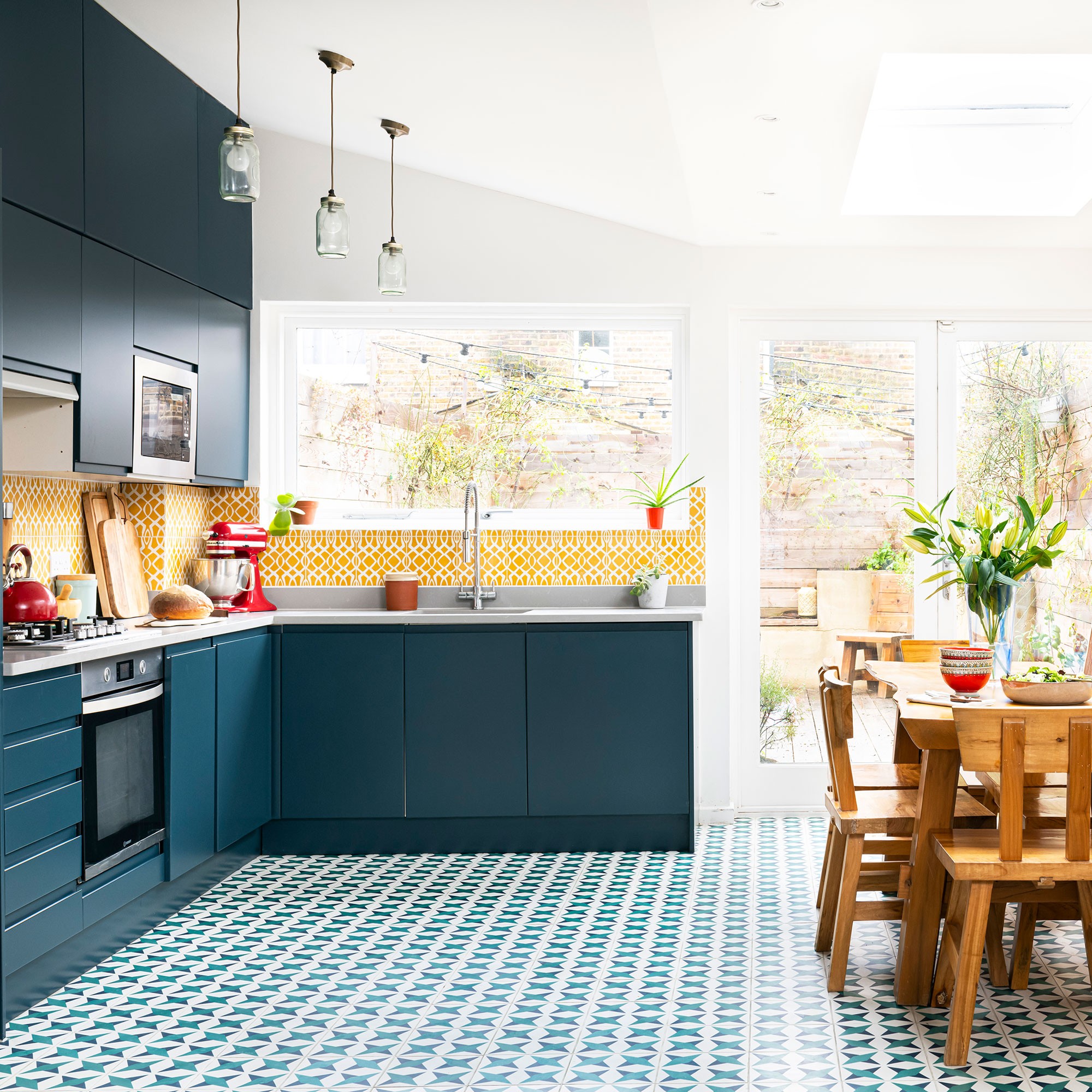
Make sure you still like the flooring you loved in the showroom once it’s in situ in your home. The colour may look different when seen under different lighting, or the material may clash with your units or worktops.
Remember that sealing can change the colour, so be sure to look at a sealed sample before you buy.
7. Acquire the right amount
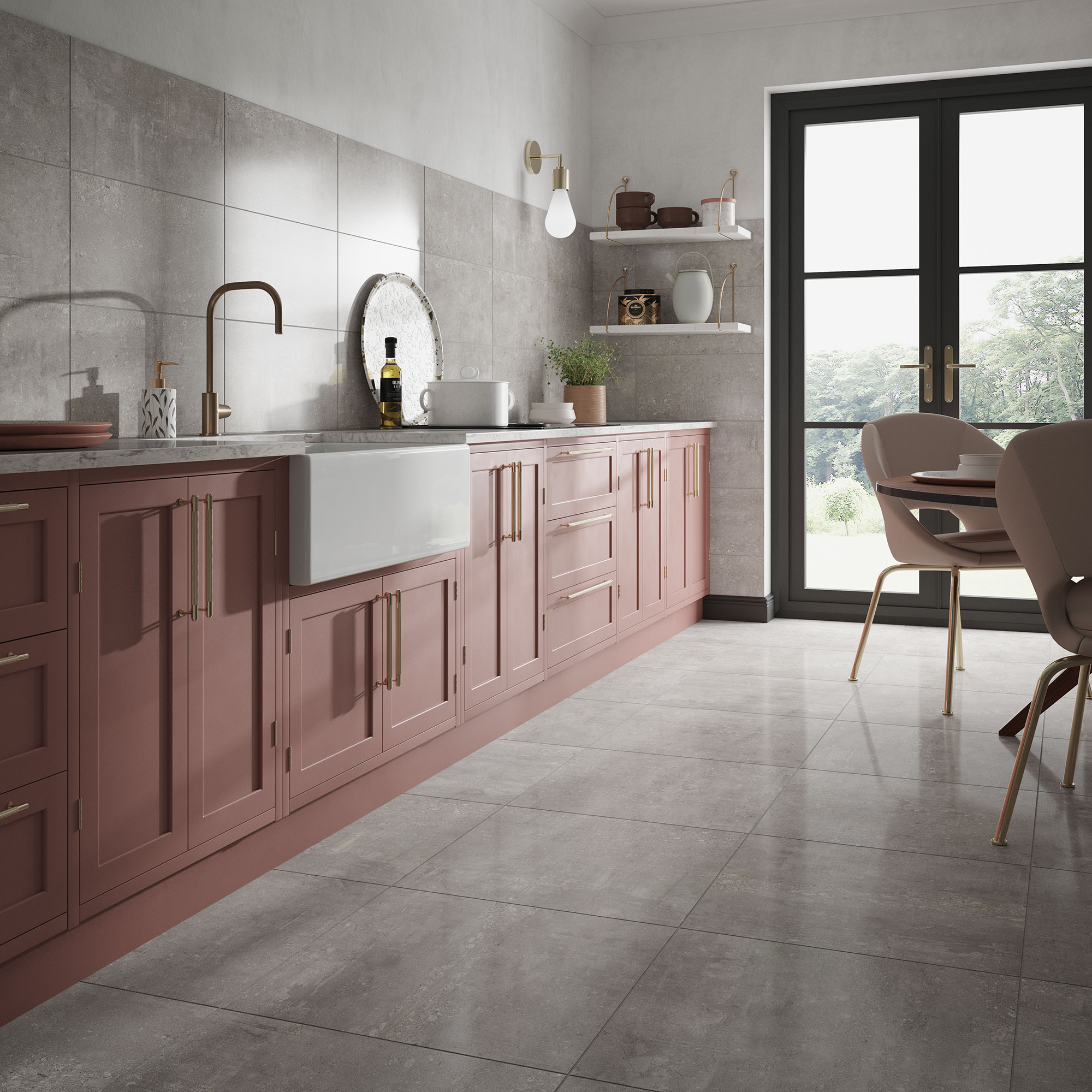
One of the most asked questions with how to buy kitchen flooring is simply how much to get.
'We recommend calculating the flooring you need in square metres,' suggests Matthew from IVC Group. 'This means measuring the width of your room, measuring the length and then multiplying the length of your room by the width. Finally, add 10% to account for overage and give yourself peace of mind.'
'As well as the 10% extra in case of breakages or damage, it's always handy to keep some spare flooring to hand, as batches and products can change or become discontinued,' notes Kamila from Tile Giant. 'If you ever chip or damage one plank or tile, it is easy to change if you have the original stock which may not be available to purchase in a few years’ time.
8. Prepare for installation
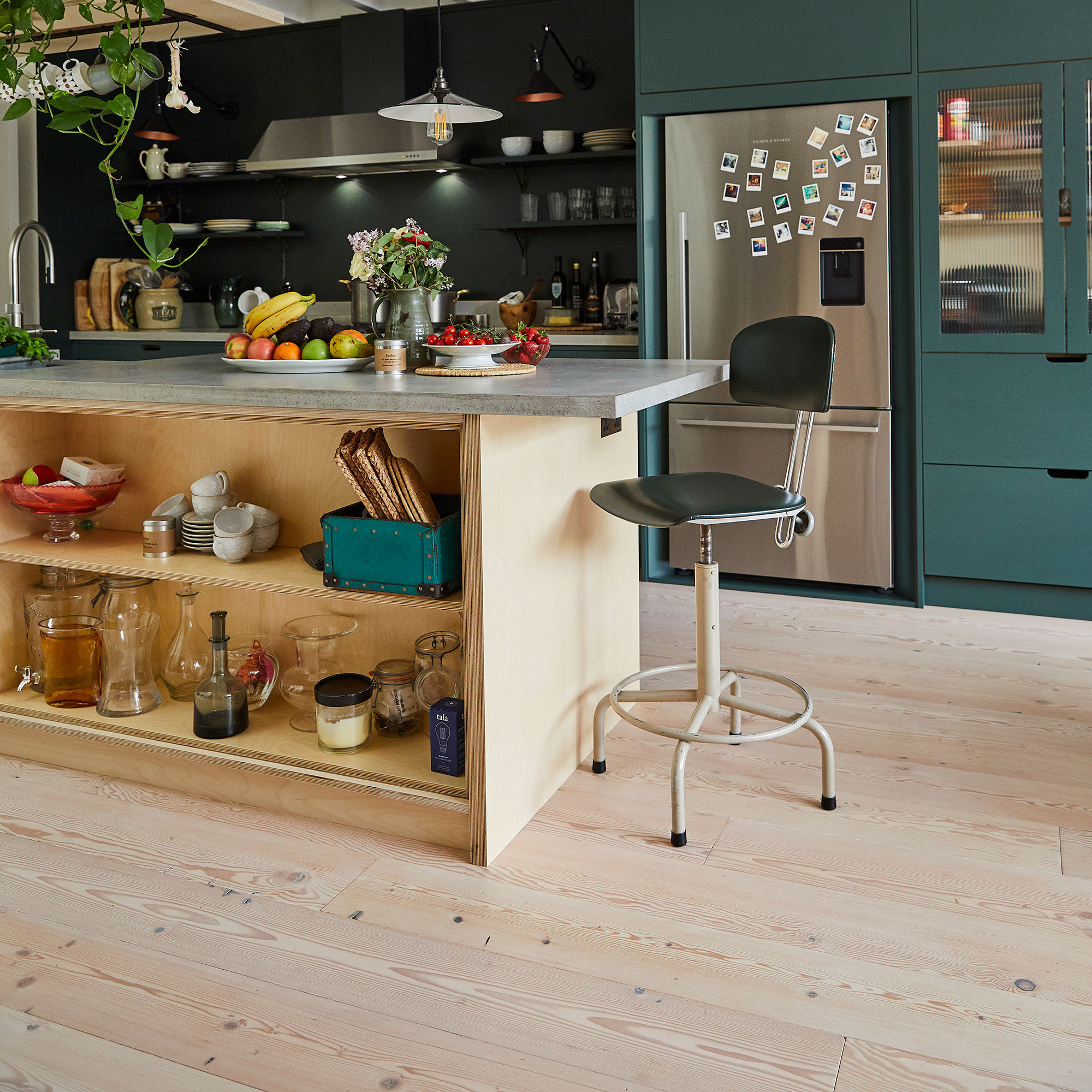
Whether you're installing your own kitchen flooring, or getting someone in, there are a few steps to take before it can be laid. In each case do speak to your supplier as this varies by material.
'Ensure access to the room is clear and the room is empty,' advises Alex Main, Director, The Main Company. 'Some flooring needs to sit in the room for 2 weeks to acclimatise to the site humidity.'
Remember that some types of flooring need to be installed at the start of the kitchen design process, whereas others can be installed afterwards. Ask the manufacturer in advance to avoid any nasty, costly surprises.
What is the best flooring to have in a kitchen?
The best flooring for your kitchen is dependent on your space and your needs. However there are various benefits to the different materials available.
'As a company who sell both natural stone and porcelain we like to think we have a neutral stance on this!,' says Isabel from Quorn Stone. 'Natural stone flooring can be one of the most forgiving floor coverings if the right stone and finish are chosen. A tumbled finish provides an aged look, its worn edges, textured surface and natural markings makes it extremely forgiving with day to day crumbs and dirt.'
Vinyl is another popular choice as it withstands scuffs and stains easily. Plus, it's naturally warm underfoot which is always a bonus.
Green credentials also play a part in working out how to buy kitchen flooring. 'Cork is 100% natural and renewable and across a 200-year lifespan, a typical cork tree is harvested 15 times without damage,' says James from Recork. 'Our flooring is made from 85% cork - a combination of freshly harvested cork, recycled cork and waste cork from the production of bottle stoppers.'
'With the recent rise in awareness for sustainability and eco conscious materials filtering through to design, reclaimed wood is a great option that not only considers the environment but also introduces authentic charm to the kitchen,' suggests Alex from The Main Company. 'No piece of wood is identical and therefore no kitchen using reclaimed wood will be either. Repurposing timber not only provides the material with a new lease of life but also introduces a rich design history to your kitchen design that doesn’t compromise.'
What is the easiest kitchen flooring to maintain?
As said above, LVT is incredibly easy to maintain, but many other materials are, too, if vinyl isn't your vibe. If you're looking at tiles, porcelain is a good choice. 'Porcelain tiles are much easier to clean than others as you don’t have to worry so much about damaging your sealant or water marks,' notes Damla from Otto Tiles. 'Most porcelain is micro sealed during production which means they are even more resistant to wear and tear, so the upkeep is minimal.'
'A porcelain tile is non-porous and will therefore provide a stain proof option which can be preferable with young children,' adds Isabel from Quorn Stone.
Jennifer is the Deputy Editor (Digital) for Homes & Gardens online. Prior to her current position, she completed various short courses a KLC Design School, and wrote across sister brands Ideal Home, LivingEtc, 25 Beautiful Homes, Country Homes & Interiors, and Style at Home.
-
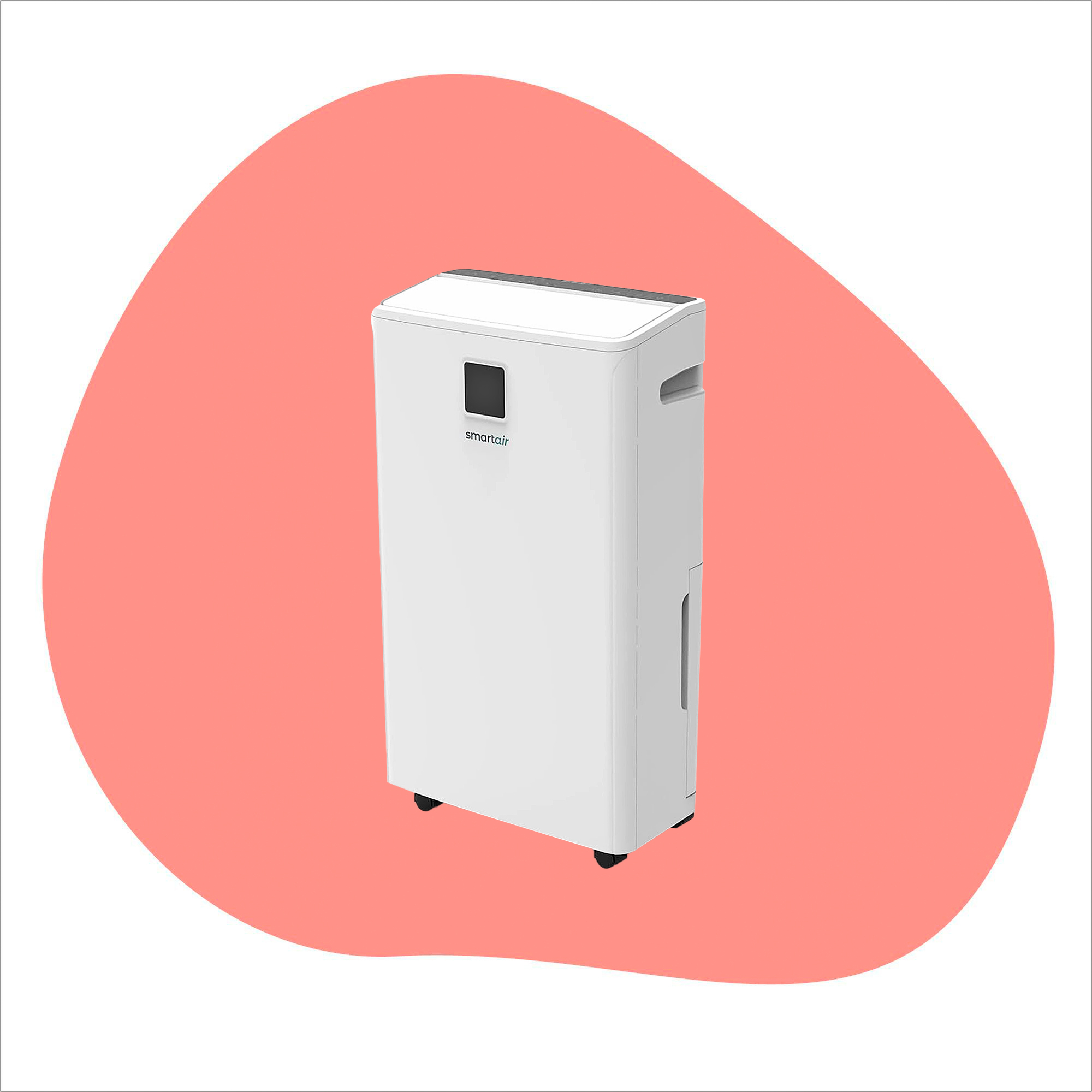 I tried out this neat little dehumidifier for a month – it dried my laundry in half the time
I tried out this neat little dehumidifier for a month – it dried my laundry in half the timeThe 20L SmartAir Dry Zone dehumidifier tackled my laundry drying woes head on
By Jenny McFarlane
-
 I’m seeing pastel garden furniture at all my favourite brands this spring, but QVC’s sorbet collection impressed me the most
I’m seeing pastel garden furniture at all my favourite brands this spring, but QVC’s sorbet collection impressed me the mostFresh pastel shades are a great way to liven up your outdoor space
By Kezia Reynolds
-
 Don't tell my flatmates, but Joseph Joseph's clever new sink range finally made me enjoy washing up
Don't tell my flatmates, but Joseph Joseph's clever new sink range finally made me enjoy washing upI didn't know stylish washing up accessories existed until I saw this collection
By Holly Cockburn